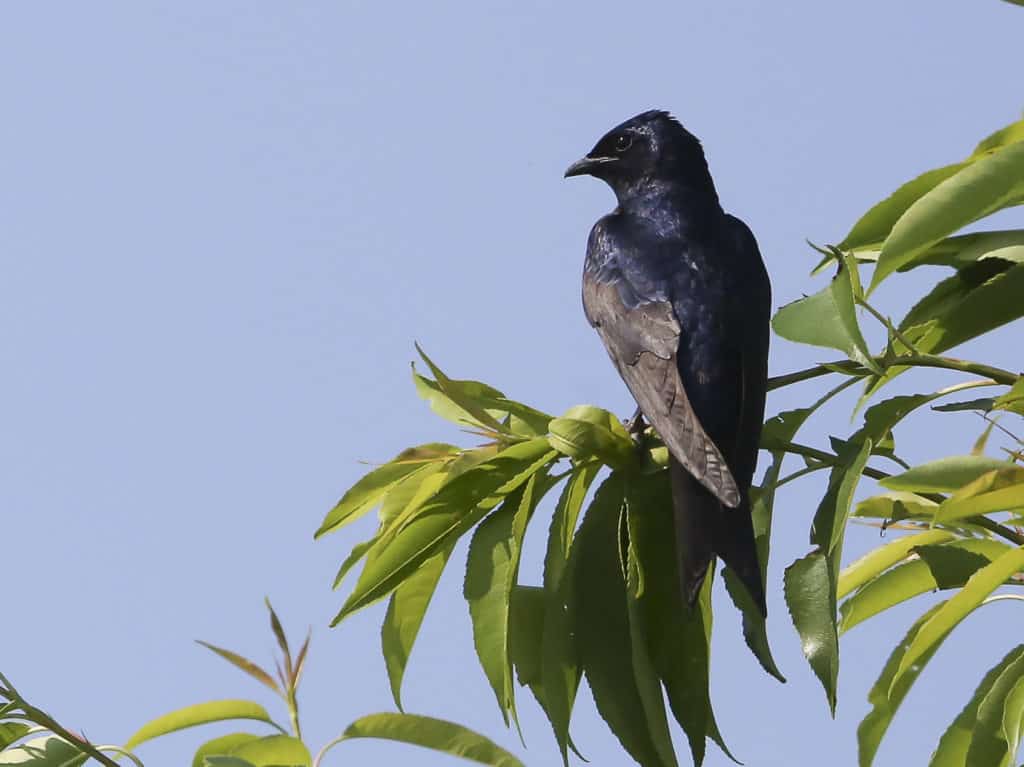Creature Feature

Birds on Mosquito Patrol
I dislike mosquitoes but yet I go to places where they are common, swamps and marshes, and they seem to like me. I wear light-weight long pants and long sleeve shirts with picaridin repellent applied to the cloth but they seem to always find a spot to bite.
Long ago, mosquito control was for the birds. In the early 19th century, most towns had purple martin houses prominently placed. Huge flocks of martins would arrive in time to patrol the cities, each bird reducing the mosquito population by its weight each day. The Purple Martin Conservation Association also reports that Native Americans, the Cherokee, Chickasaw and Choctaw tribes made martin houses to be placed around their villages.
Purple martins are the largest of the swallow family. Known for their speed and aerial acrobats, they catch all their food inflight and drink water by skimming along the water’s surface. From their wintering grounds in South America, they fly back to the same nesting area that they were successful at the year before. They prefer nesting in colonies, enjoying man-made houses but also using abandoned woodpecker nests. The older males arrive first to stake a claim and to make sure everything in the nest is in order. Females and young birds arrive about two weeks after the males. They mate for life and try to use the same nest year after year.

The purple martin is a very social bird and they will talk to each other frequently. Luckily, they are not too loud, just constant. A large colony of birds usually will hunt in the same area, drive off predators together and start their migrations together. In a colony, when a brood of birds fledges the youngsters usually will hang out together. It seems to keep the young safer and easy for the parents to feed. Protection in numbers applies to the martins.
The idea that they can be used to control mosquitoes around cities has not been a viable solution since the 1850s due to the introduction of the European starling and English house sparrow. Both of these now common birds will aggressively take over martin nests and sometimes will kill the adults and young. When a martin is evicted by one of these intruders, they do not usually return to those nests.
However, starlings and house sparrows are usually not common near a marsh. Martins are now more commonly seen along the shorelines of lakes, estuaries and saltwater beaches. If you live near an open shore or marsh, consider putting up a group of martin houses. The Purple Martin Conservation Association is a good resource for placement and design.
